A 4-day canoe circuit on Vancouver Island
Even if you’re an avid canoer in southwest BC, you may not have heard of the Sayward Forest Canoe Route on Vancouver Island. This under-rated canoe circuit is like a mini version of the famous Bowron Lakes, but expect far less driving, far less vacation time sacrificed, and zero park reservations! A good mix of relaxed and easy paddling, and good exercise on the portage trails, this trip fits perfectly into a long weekend.
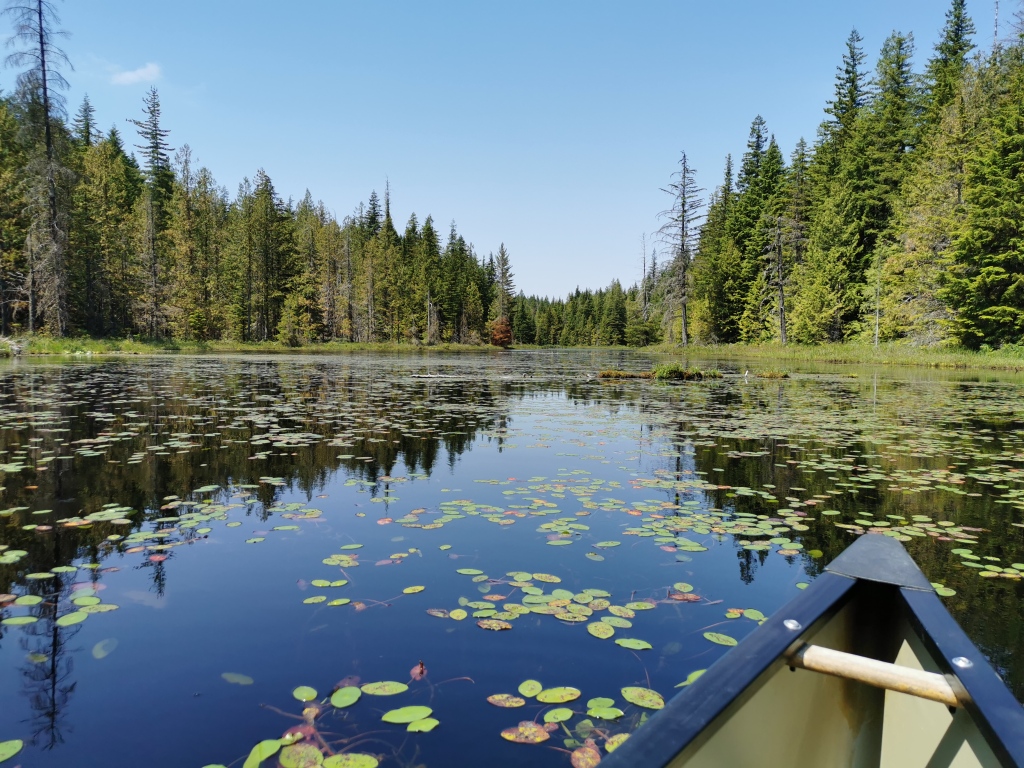
The Basics:
- The Sayward Canoe Route is located east of Campbell River on Vancouver Island. While the circuit can technically be started from any of the car-accessible points, the most common starting point is the boat launch in Morton Lake Provincial Park. This park is accessible via an FSR (a little rough, but 2WD will do), and has free parking available for the duration of your trip.
- To get to Vancouver Island, you’ll need to take a ferry from Vancouver to Nanaimo. Reservations are recommended on weekends and especially holidays, but you could make do without. From Nanaimo, Morton Park is about a 2.5 hour drive north.
- The canoe route consists of a number of lakes, rivers, and portage trails that connect into one large circle. In total, there’s about 39 km of paddling on the water, plus about 8 km of portaging between the lakes and rivers.
- There are many campsites along the circuit, ranging from car-accessible RV sites to rustic water-access-only sites with no services. Additionally, there are plenty of lovely sand beaches on which to pitch a tent outside of the marked sites.
- The Sayward Route should be done counter-clockwise. This is to match the direction of the river current (so you’re not paddling upstream). Additionally, some of the portage trails are extremely narrow, and you’d have a hard time making room when you encounter other portagers going in the opposite direction.
- The entire trip is beginner friendly. You’ll need to know some basic strokes (the J, the C, etc.), but the paddling is relatively gentle. I had spent all of one hour in a canoe prior to this trip, and didn’t find anything too challenging.
- The entire route can be done in 2 to 4 days, depending on how long you’d like to paddle each day, how you tackle the portages, etc. We completed the route in about 3.5 days, paddling/portaging only about 5 hours per day.
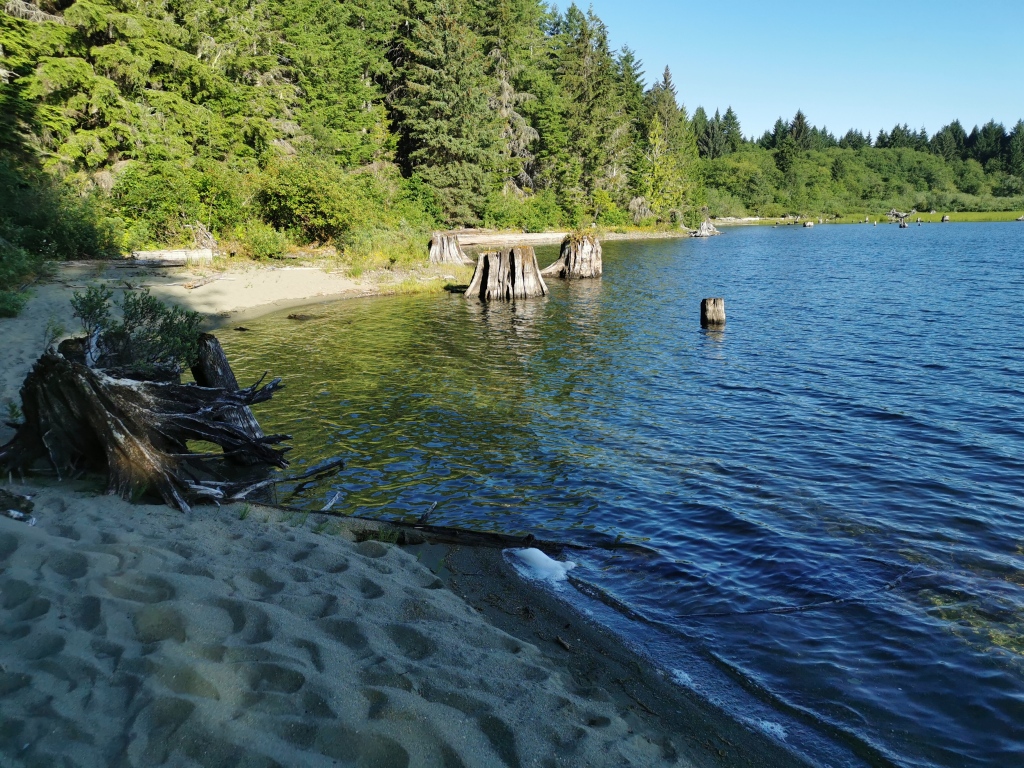
The Planning:
- Check out the brochure first! It’s quite informative.
- If needed, rent some canoes. Comox Valley Kayaks and Canoes provided us with canoes, paddles, PFDs, and portage carts, and even transported the boats to and from our starting point at Morton Lake Provincial Park.
- Make ferry reservations if needed. Highly recommended on long weekends especially.
- Print the route map from the above brochure, and put a copy in a ziploc bag to check out while you paddle.
- Note that no reservations are needed for the canoe circuit itself – no park permits, campsite bookings, or backcountry passes required. Easy!
- Load up your canoes, and go!
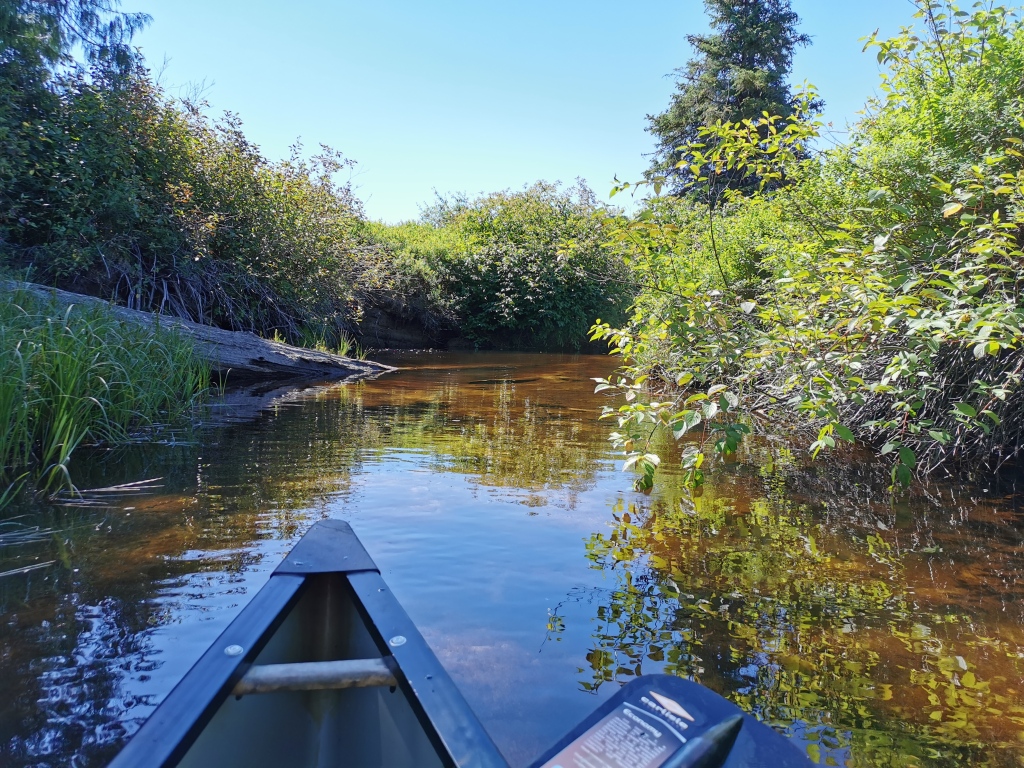
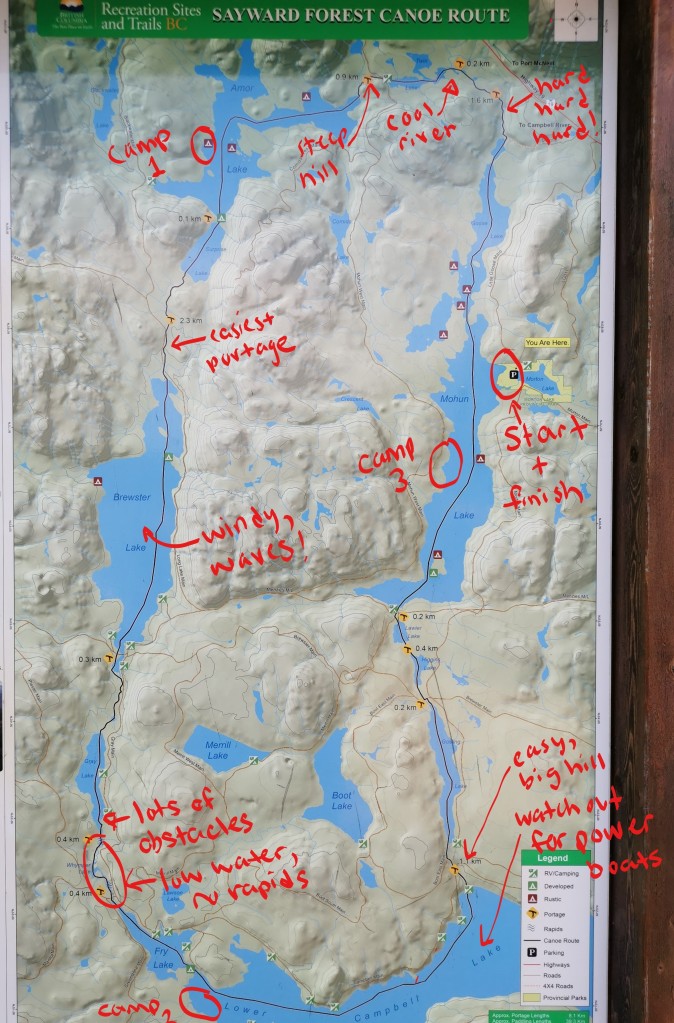
The Portages:
The portages were sufficiently brutal that I thought I’d break down some hard-won lessons-learned:
- Portage trails are narrow, hilly, rocky, and full of bushes and tree roots. It can feel like a full-out brawl between the two of you to keep those heavy canoes and gear moving the way you want them to.
- The trails are well-marked and obvious however. We didn’t have an issue finding or following any of them.
- There are two ways to portage: with a canoe-cart, or old school (ie: carrying the canoe). If carrying, pack light! Canoes are designed to be carried by one person in the center, so the other will take the bags. Or, you could double-portage: once with the canoe, and a second time with the gear. If using a canoe-cart, it’s worth it to get one with thick wheels (the ones at Comox Valley Kayaks and Canoes are fantastic), since we saw a number of canoers struggling on that terrain with thin-wheeled carts.
- If using a portage cart, it’s worth it to take the time to set things up right, since the trails are very unforgiving: land, take your gear out, lift the boat onto the cart, carefully center the wheels (front to back, and side to side), firmly tighten the straps, then load all the gear directly in the center right over the wheels. Learn from us as struggled to keep the boat on track on thin trails, tight turns, big bumps, and steep hills!
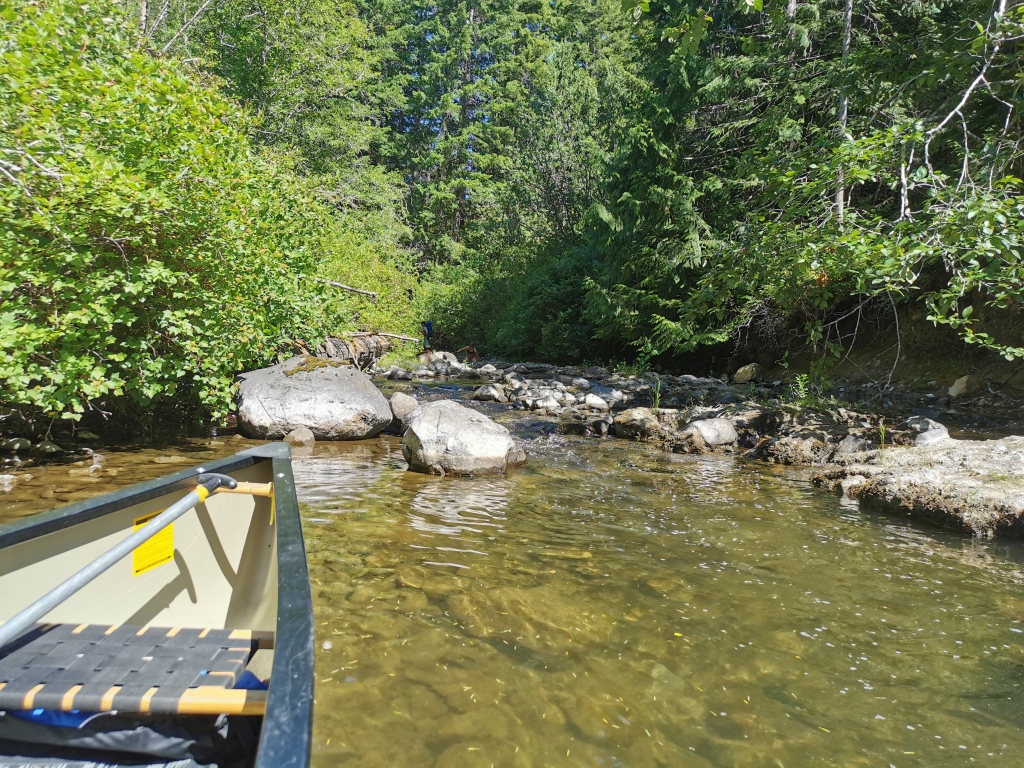
The Tips:
- Bring some good water shoes or sandals – you’ll have to hop out of the canoe on occasion to push past river obstacles, or wade through mud when launching. Also, you’ll need something that can handle rugged terrain on the portages.
- Pack everything that can’t get wet in dry bags.
- Aim to cross larger lakes in the morning to minimize wind – this will make your paddling faster and much more enjoyable.
- Look for campsites that aren’t directly on points or islands, as these sites can be uncomfortably windy.
- The water-access campsites are actually very small – usually only a couple of tent pads. We did this trip on the popular Canada Day long weekend, and had a large group (9 people), so didn’t bother with any of these, instead looking for sand bars which had enough room for our collection of tents.
- On the map, there are two sections with rapids. After a hot spell in June, these river sections were nearly dried up! We jumped out and pushed and pulled the canoes through the first rocky river section, then gave up and used the parallel portage trail for the second. I can’t speak to how difficult these rapids might be should you try the route in Spring, but there is a portage option if you don’t want to test yourself.
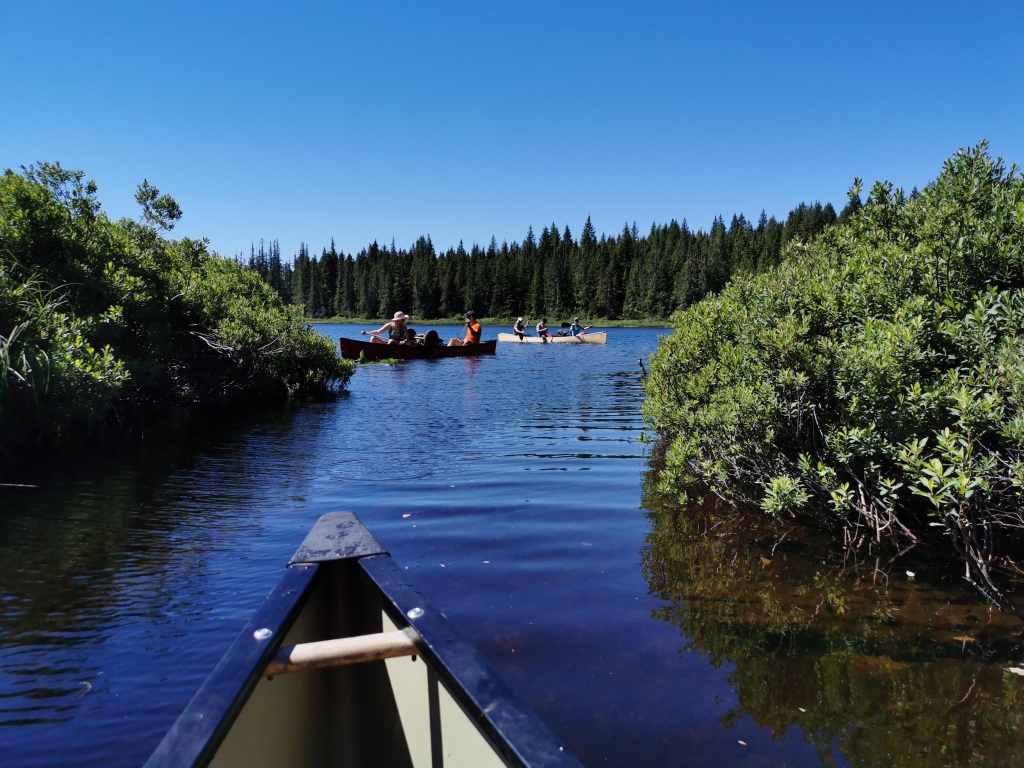
The Highlights:
Here are a few of my trip highlights, to get you inspired:
- The river portions: slowly drifting on the calm, narrow rivers was a lot of fun, and often included having to hop out and balance on logs to pull the canoe over shallow terrain, or dive in to move logs, or even sink up to your chest in mud. The problem-solving was good fun.
- The first portage, which was chaos. We weren’t expecting the full-out effort required to make it through, but it was very entertaining.
- Stopping to saw a fallen tree across one of the portage trails with a portable saw our resident boy-scout had the foresight to bring!
- Turning a spare paddle into a sail on our lunch break. That boat got a speed boost on the water that afternoon!
- One of our paddlers swimming alongside the canoes on the final kilometer of the trip, and others joining in the fun.
- Eating well with luxurious and heavy foods at camp (pad thai, steaks, and plenty of mojitos).
- Beautiful sunrises on sandy beaches.
- One of the narrow rivers, clear and incredibly still. Underneath, you could see forests of intricate tree roots laced with random tires…
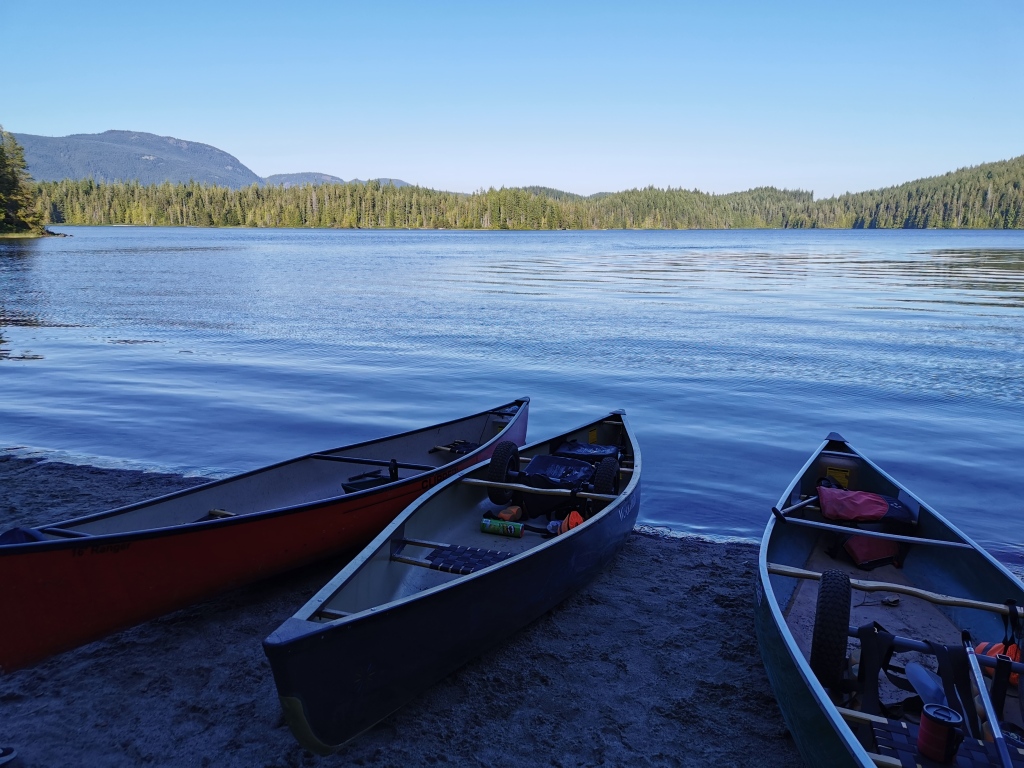
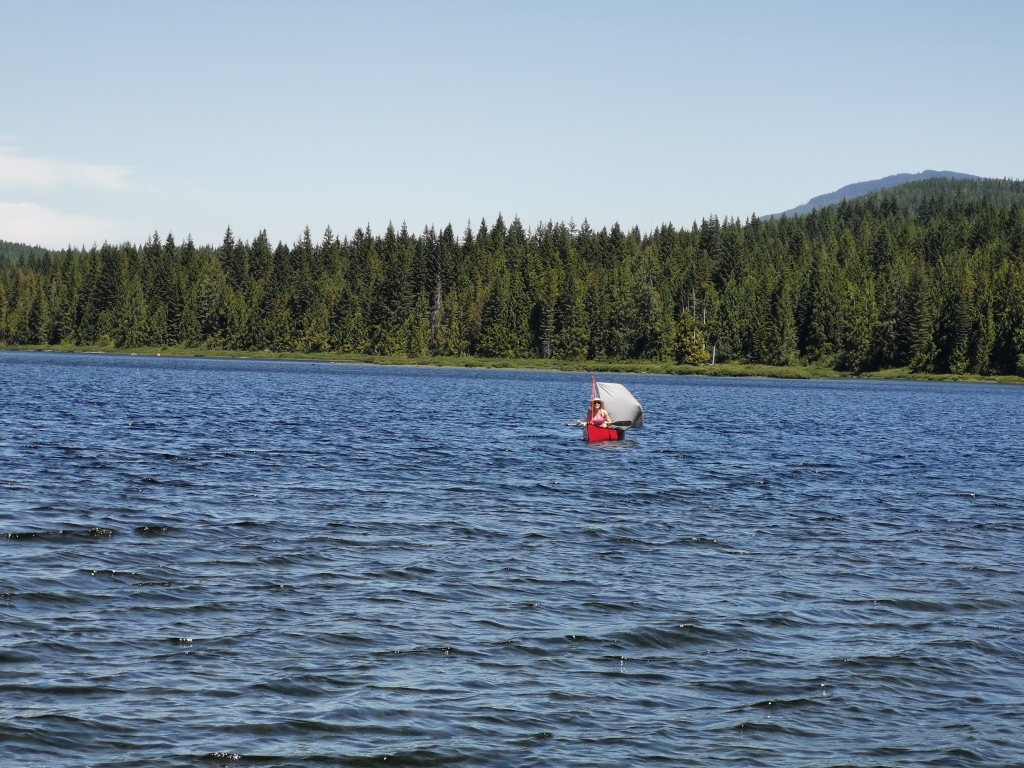
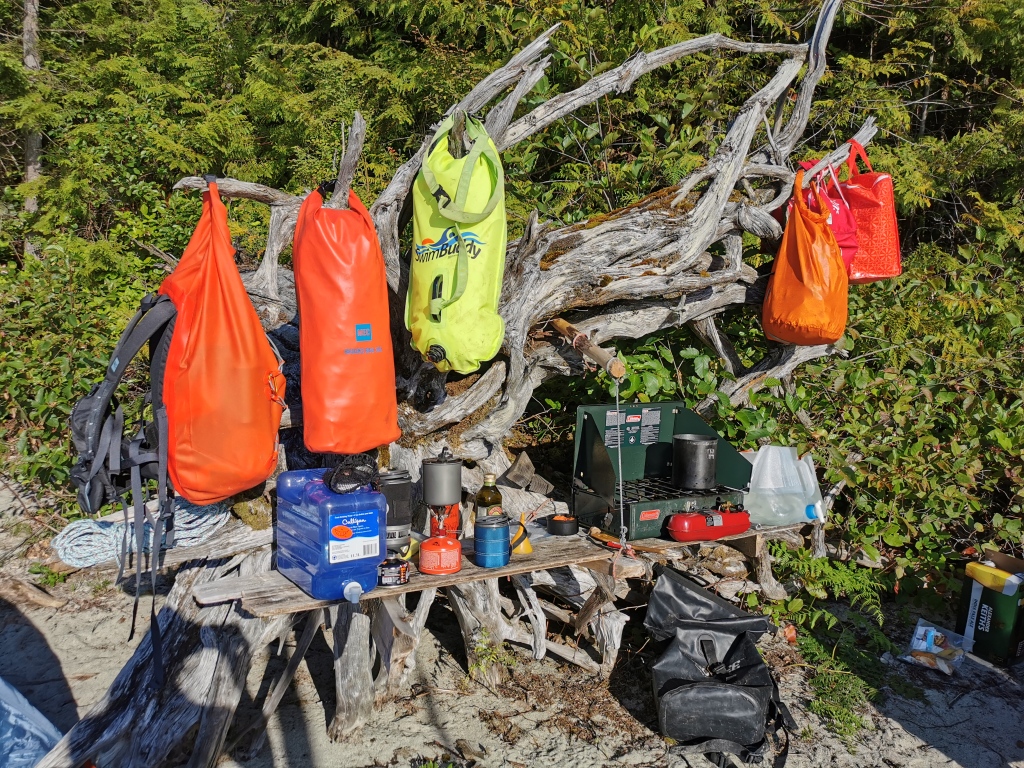
Ever heard of the Sayward Canoe Route? If not, what’s your favourite place to take a canoe? Give me some recommendations in the comments below, and if you’re interested in more water adventures, check out my kayaking posts: A Paddler’s Guide to Desolation Sound, and A Paddler’s Guide to the Broken Group Islands.

One thought on “That’s a Paddlin’ (the Sayward Canoe Route)”